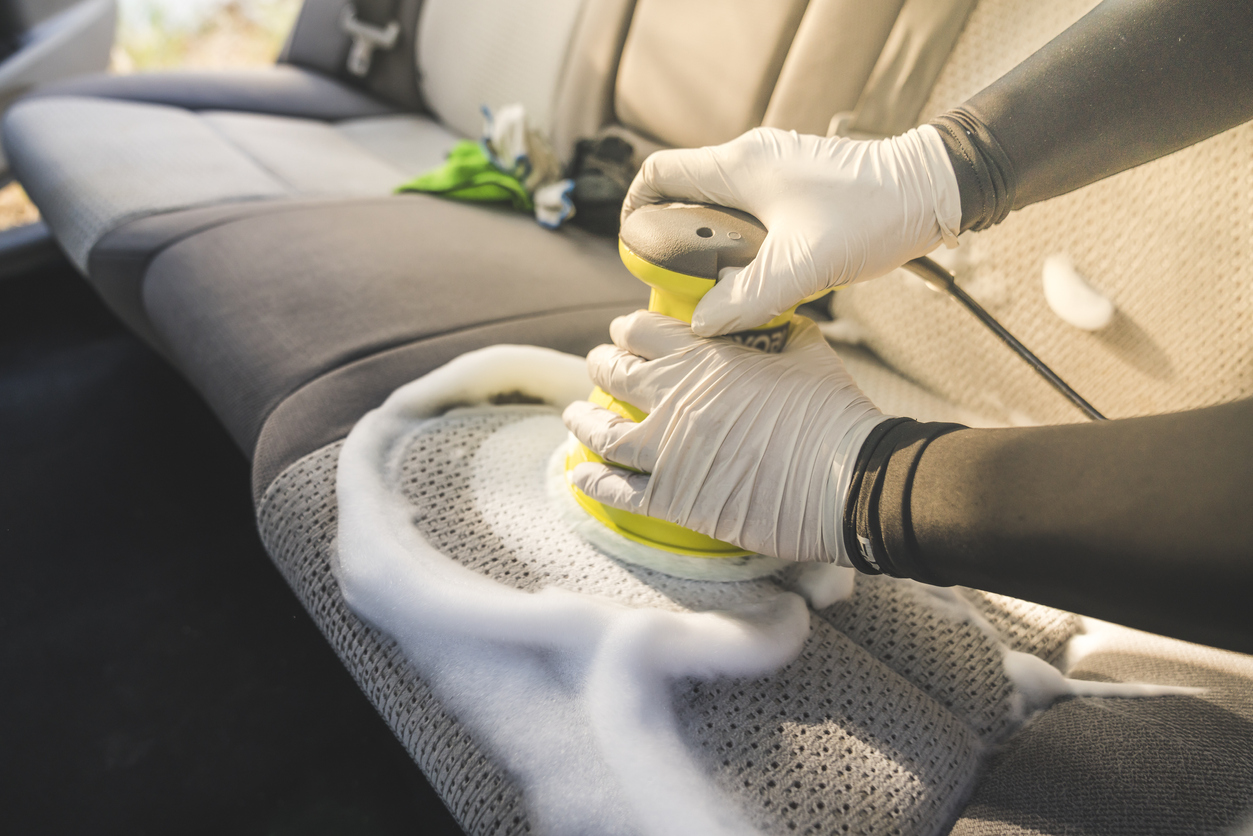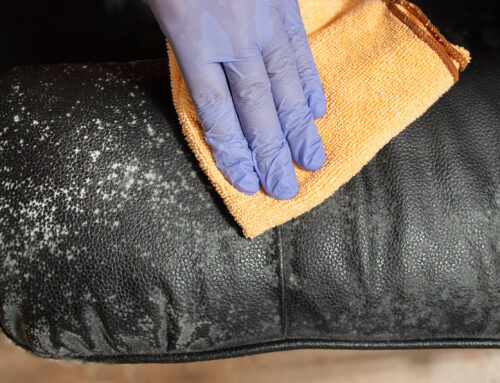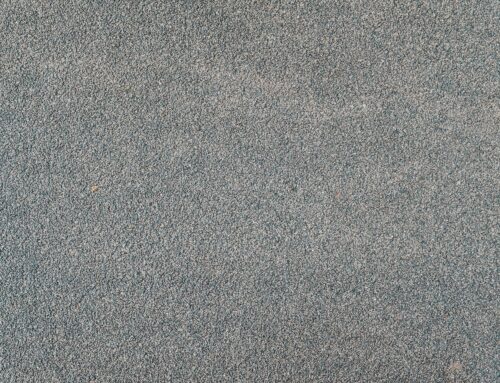Leather seats are a luxurious feature that add elegance and comfort to any vehicle. Perforated leather seats take that experience even further with their breathable holes that let air pass through. However, those same holes that make perforated leather so comfortable also allow dirt, grime, and spills to easily sink in. That’s why it’s important to learn how to properly clean perforated leather seats.
When it comes to cleaning your perforated leather, you want to be thorough yet gentle. Harsh cleaners and scrubbing can actually damage the leather. Instead, you need a process that lifts debris from the holes without roughing up the material. The good news is that with the right techniques and products, you can keep your perforated leather seats looking fresh.
In this article, we’ll explain the step-by-step process for cleaning perforated leather seats. We’ll go over:
- Why it’s important to clean perforated leather seats regularly.
- Supplies you’ll need for cleaning perforated leather.
- How to thoroughly vacuum perforated leather seats.
- Using a leather cleaner and microfiber towels.
- Gentle agitation for stubborn stains.
- Clearing out grime from the perforation holes.
- Conditioning and protection when you’re done.
- Professional interior cleaning services for perforated leather.
By the end, you’ll know exactly how to clean your perforated leather seats and have them looking like new. Let’s start with why regular cleaning is so important.
The Importance of Regular Cleaning for Perforated Leather
Perforated leather requires more frequent cleaning than smooth leather. All those extra holes provide plenty of access for spills, grease, and grime to work their way deep into the material. If left too long, buildup in the holes can lead to:
- Embedded dirt that’s difficult to remove.
- Permanent stains as grime sets in.
- Bacteria growth from accumulated sweat and oils.
- Foul odors from trapped debris.
- Cracking and drying caused by blocked moisture evaporation.
Regular cleaning keeps your perforated leather fresh, extends its life, and preserves its soft supple feel. Aim to thoroughly clean your perforated seats at least every couple months. For heavier use, monthly cleanings are better. Immediately treating spills also helps avoid lasting damage.
Now let’s look at the supplies you’ll want for DIY perforated leather cleaning.
Supplies for Cleaning Perforated Leather Seats
Cleaning perforated leather seats doesn’t require a ton of expensive equipment. Here are the basic supplies you’ll need:
- Vacuum – A handheld vacuum makes thorough seat cleaning easier. The hose extension lets you vacuum hard to reach seams and perforations.
- Leather cleaner – Use a mild leather cleaner without harsh solvents. Lexol and Chemical Guys are good brands.
- Microfiber towels – Microfiber cloths lift away dirt without scratching. Keep some dry and damp.
- Detail brush – A soft detailing brush dislodges debris from perforations.
- Water – Lukewarm water helps create a leather safe cleaning solution.
- Spray bottle – For applying leather cleaner and water solutions. Avoid using paper towels.
- Optional extras can also help:
- Foam swabs – For cleaning perforations and seams.
- Towel comb – Picks up debris from perforated holes.
- Leather conditioner – Restores moisture after cleaning.
- Leather protector – Guards against future stains.
With the right supplies, you’re ready to start cleaning. We’ll begin with vacuuming.
Step 1 – Thoroughly Vacuum Perforated Leather Seats
It’s amazing how much dirt a vacuum can remove before you even break out the cleaners. Here are some tips for effectively vacuuming perforated leather:
- Use a handheld or mini vacuum for maneuver ability. The hose extension lets you target tight areas.
- Adjust to the lowest height setting so the vacuum nozzle can reach seams and perforations.
- Begin by thoroughly vacuuming top seating surfaces, including side bolsters.
- Then do several passes over seams and perforated holes. Angle the hose across them from multiple directions.
- Check for any embedded debris you can remove by poking it with a clean soft brush or swab.
- Don’t press or scrub hard, which could scratch the leather.
- Pay extra attention to perforations and seams where grime collects.
- For console surfaces, use a brush attachment to dislodge trapped dirt.
Vacuuming first prevents pushing loose dirt further into perforations when cleaning. Now let’s tackle cleaning solutions.
Step 2 – Mix a Mild Cleaning Solution for Perforated Leather
Harsh chemicals can damage the finish of perforated leather seats. That’s why it’s important to use a cleaning solution designed for auto interiors. Here are a couple safe options:
- Diluted leather cleaner:
- Mix water and a mild leather cleaner concentrate that contains no harsh solvents or alcohol.
- Typical dilution ratios are around 10:1 to 16:1, but check your cleaner label.
- Use lukewarm water so you don’t strip the leather’s oils.
- Mild soap and water:
- Use a couple drops of a gentle liquid hand or dish soap per cup of lukewarm water.
- Avoid dish soaps with added cleaners like bleach that could discolor leather.
- Things to avoid:
- General cleaners containing alcohol, ammonia, or strong detergents.
- Armor All and similar vinyl conditioners.
- Homemade cleaners like vinegar, baking soda, toothpaste, etc.
A quality leather specific cleaner is your best bet for getting seats clean while keeping them supple. Never apply cleaner directly to leather. Always use a spray bottle to control application.
Step 3 – Gently Clean Seats with Microfiber Towels
With your cleaner mixed, it’s time to start wiping away grime. Here’s the safest process:
- Spray cleaner directly onto a microfiber towel, not the seat.
- Use light pressure to work the damp towel over the seat’s top surface.
- Rinse the towel frequently to remove lifted dirt.
- Scrubbing can damage the leather’s delicate finish.
- Dab a swab or towel into perforations to soak up debris inside.
- Wet a towel with clean water to remove any soap residue.
- Finally, pat dry with a fresh dry microfiber cloth.
Switch to new sections of your towel frequently. You want to lift dirt away rather than just pushing it around. It typically takes a few passes to fully clean perforated leather.
Step 4 – Stubborn Stains and Dried Debris
Sometimes a basic cleaning leaves behind stubborn stains or dirt caught deep in perforations. Here are some tips for tackling these issues:
For stubborn stains:
- Let heavily soiled areas soak for 12 minutes after spraying cleaner to soften the grime.
- Reapply cleaner and gently rub with a damp microfiber towel.
- Avoid aggressive scrubbing that could abrade the leather.
- You can very lightly agitate with a soft detailing brush across (not into) perforations.
For dried debris in perforations:
- Use a damp microfiber towel to loosen and soak debris in holes.
- Carefully pick at clingy bits with tweezers or a disinfected pin.
- Run a wet foam swab gently across perforations to push out grime.
- Finish by spraying cleaner into holes and dabbing with a towel.
- Avoid forcing objects into perforations that could widen holes or leave residue.
- With some extra attention, you can clear away even stubborn issues while still being gentle.
Step 5 – Condition and Protect Perforated Leather
Once your perforated leather seats are freshly cleaned, there are a couple optional steps to finish the job:
Add conditioner – Wipe on a leather conditioner containing oils and Vitamin E. This nourishes leather to prevent drying and cracking, especially after cleaning.
Apply protector – Spray on a leather protector sealant. This waterproofs and guards against stains and UV damage. Avoid armor all type vinyl products.
Conditioner keeps perforated leather supple, while protector creates a barrier against future grime. Follow product label directions for applying either treatment. Use both once every six months or so to keep seats looking their best.
And those are the basic steps for a DIY cleaning of perforated leather seats. You don’t need any fancy tools or products. Just be patient and gently lift away debris for a factory fresh look. If you clean perforated leather regularly, it will provide years of comfort with minimal fading or damage.
The Convenience of Professional Perforated Leather Cleaning
Cleaning perforated leather yourself lets you save money while keeping seats fresh. But for some, hiring a professional service is worth the convenience and perfect results.
Professional interior detailing services have commercial grade tools and products for an unbeatable clean:
- Powerful vacuums – Extract far more dirt from perforations than home models. Some even feature adjustable suction levels to avoid damage.
- Steam cleaning – Loosens and sanitizes without using chemical cleaners.
- Foam extraction – Special foam is worked into perforations and sucked away along with grime.
- Ozone treatment – Ozone machines eliminate odors and sanitize to a microbiological level.
- Leather repair – Minor scratches, burns, or cracking can be expertly repaired.
- Convenience – Professionals clean your entire vehicle while you relax.
- Speed – An interior detailer can thoroughly clean seats faster than a DIY approach.
When choosing interior cleaning services, look for specialists that are experienced with perforated leather. Ask about their specific process so you can confirm proper techniques are used.
Speed Clean Services is one recommended option for Seattle area drivers. Their leather treatment cleaning package includes:
- Vacuuming perforated seams with a Metro Vac ‘N Blo.
- Agitating foam into hard-to-reach perforations.
- Steam cleaning for deep stain removal.
- Conditioning with Lexol pH balanced leather cleaner and cream.
The goal is to lift even microscopic dirt from perforations without pressing debris further in. Speed Clean Services has decades of experience keeping perforated leather looking showroom new. Their knowledgeable techs are highly certified and trained specifically for auto interiors.
Keep Your Perforated Leather Seats Looking Luxurious
Perforated leather seats require some extra care and attention compared to smooth leather. But a gentle cleaning routine keeps your seats feeling and smelling fresh. Be sure to vacuum thoroughly, use specialized leather cleaners, and avoid harsh scrubbing. Follow up with a leather conditioner and protector to maintain softness and repel future stains.
Or for a hassle-free option, trust the perforated leather cleaning experts at Speed Clean Services. Their interior detailing professionals will remove built-up grime to restore your seats’ luxurious look and feel. With some regular TLC, perforated leather seats will continue providing comfort and style for years of driving enjoyment.




